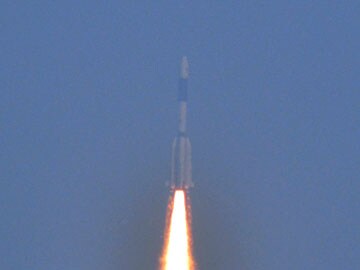
India has successfully launched its first rocket using domestically-produced booster technology, taking another step forward in its ambitious space programme.
Here is your 10-point cheat-sheet to this big story:
The home-made cryogenically-powered rocket, the GSLV-D5, blasted off from the spaceport of Sriharikota in Andhra Pradesh as scheduled on Sunday.
India has now joined an elite club of countries which have mastered the complex technology.
The powerful booster technology, using super-cooled liquid fuel, is a much-needed tool to help India capture a larger share of the lucrative global market for launching commercial satellites.
India's project has endured a string of hurdles and mishaps, including an aborted launch in August last year several hours before lift-off after fuel was found to be leaking from one of the rocket's engines.
The 415-tonne rocket deployed a two-tonne advanced communications satellite some 17 minutes after blast-off, said Indian Space Research Organisation (ISRO) chairman Dr K. Radhakrishnan.
India has for years been trying to develop its own cryogenic rocket engines that are designed to put heavier satellites into high orbits, about 36,000 kilometres (22,000 miles) from Earth.
The first India-built rocket crashed into the Bay of Bengal just minutes after take-off in April 2010 after the cryogenic engines failed to ignite.
The mission has cost India Rs 365 crore - Rs 220 crore for the rocket and Rs 145 crore for the satellite.
It has taken ISRO scientists years to develop cryogenic motors after India's attempt to import the technology from Russia in 1992 failed because of opposition from the United States.
In November India successfully lifted into orbit a spacecraft bound for Mars as it tries to become the first Asian nation to reach the Red Planet.

